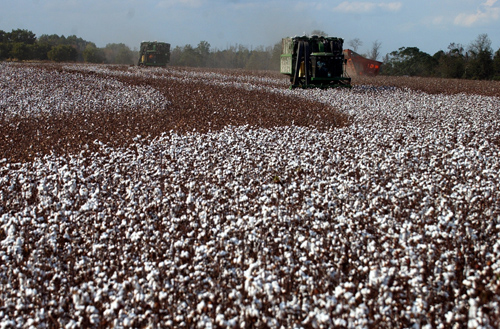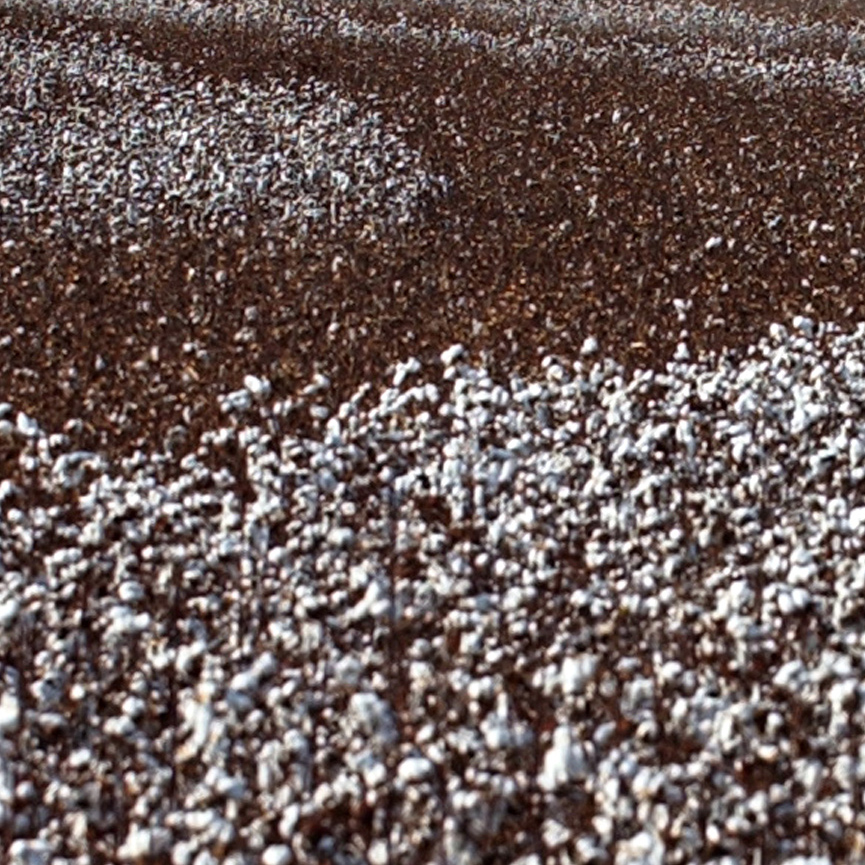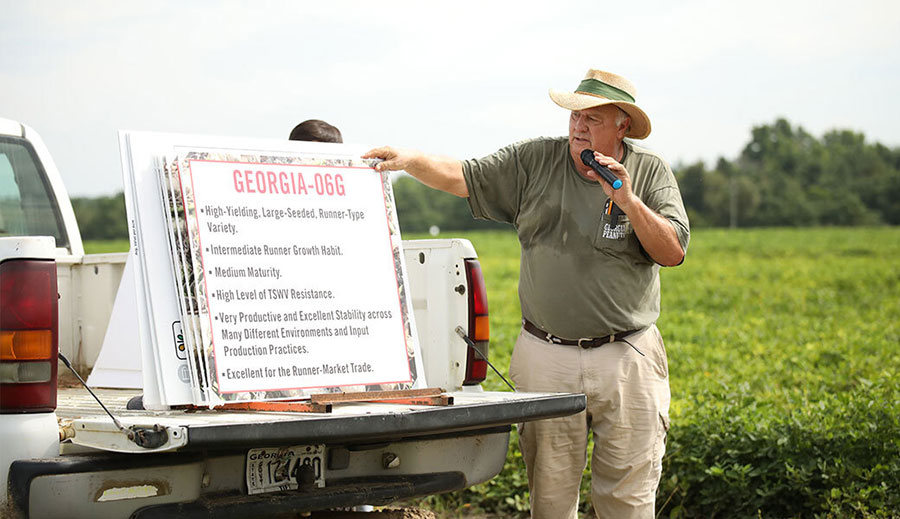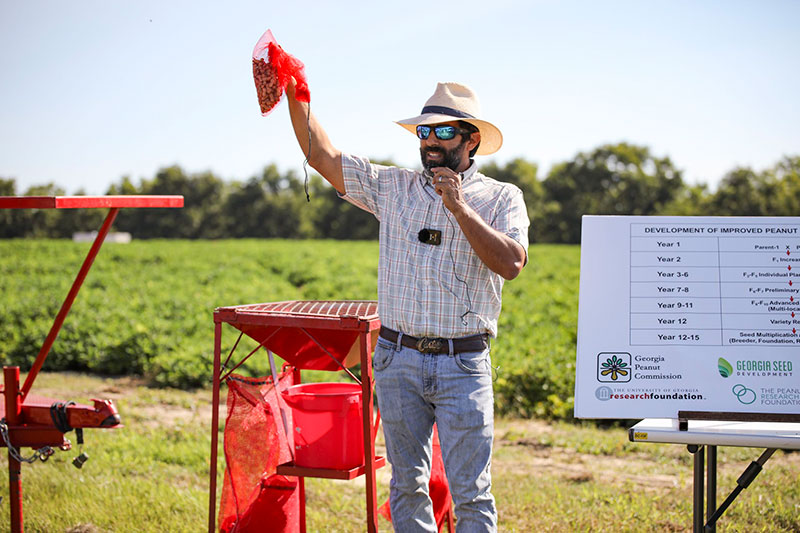Georgia farmers plan to plant more cotton and peanuts this year. And timely spring rains have helped get both crops off to a good start. Corn growers, on the other hand, are seeing a reduction in their acreage due in part to that same rainfall.
Some 30 percent more cotton
Georgia cotton growers will plant more than 1.25 million acres of cotton this year, 25 percent to 30 percent more than last year, said Guy Collins a cotton expert with University of Georgia Cooperative Extension.
“We knew acreage would increase, but it’s looking like it will be higher than we thought it would be,” Collins said.
Cotton prices are near 70 cents per pound for farmers, more than 10 cents more than in previous years. The higher prices, cued by higher global cotton demand, encouraged the increased acreage this year.
Timely spring rain around the state has kept planting right on schedule, he said. Between 75 percent and 80 percent of the cotton is in the ground. Harvest should begin in October and be complete by Thanksgiving.
Despite record rainfall during last year’s harvest, Georgia farmers pulled in an average yield of 902 pounds per acre, a new state record.
Growers search for replacement varieties
In recent years, a variety called Deltapine 555 dominated 85 percent of the cotton acreage in the state. But the variety is being phased out, Collins said, leaving farmers looking for another “work-horse” variety.
“Georgia is in a state of flux in the cotton industry,” he said. “We’ve got a lot of new varieties going into the fields. We are looking to see which variety is going to replace our staple. I think it will be a bunch of varieties, not just one. But, we will have to manage the crop differently than in the past.”
Peanut acreage up, too
Georgia peanut farmers will plant 540,000 acres this year, 6 percent more than last year, according to a U.S. Department of Agriculture report released March 31.
“The industry indicated we could withstand a slight increase because peanut consumption is up. They didn’t need an excessive surplus, but could withstand a slight increase,” said John Beasley, UGA Extension peanut agronomist.
“We’re off to a good start with the peanut crop, and it looks like the majority of fields are up to a good stand,” he said.
Most farmers are planting a variety called Georgia-06G. Other top varieties are Florida-07 and Tifguard, he said.
“Georgia-07W and Georgia Greener were in demand, but there weren’t enough seeds to meet demand. These varieties are still in the seed-increase stage,” Beasley said.
For the past few years, drought then wet weather pushed planting dates into June or even July.
“This year we were cool in the later part of April with decent moisture. In the first of May, we had as ideal of a situation (for planting) as you could imagine,” Beasley said.
Most planting began around May 8 and should be ready for harvest in September.
Corn and wheat down
Corn acreage is down, too, in Georgia. Declining prices and wet weather in the spring and fall added to the reduction.
Farmers planted 380,000 acres this spring, 10 percent less than last year.
“We’ve gone through some nutrient deficiencies due to excessive rains, but the crop is expanding rapidly and as a whole the crop looks good,” said Dewey Lee, a UGA Extension grain specialist.
The next three to four weeks will be a critical time for corn development and a time when its demand for water will be the highest, he said.
Farmers have planted 200,000 acres of wheat, 140,000 acres less than last year.
“Wheat acreage is down severely,” Lee said. “We’ve begun harvest and are average to below average in yields. Test weights are off in some areas.”









